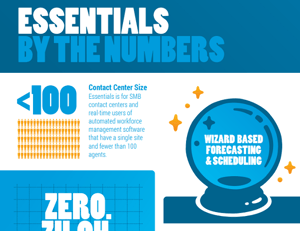
If you’ve tried searching for software to improve employee efficiency in the past, you’ve likely stumbled across many different types of solutions. Two of the more prominent software categories in this area are workforce management (WFM) software and labor management (LM) software. On paper they look similar, but in reality, the two software solutions are quite different. Here’s a direct labor management software and workforce management software comparison so you can better understand which option is the best choice for your business goals.
Labor Management Software
Who is it for?
LM software is a solution leveraged primarily by fulfillment centers, distribution facilities, or warehouse operations. The purpose of the software is to assist with employee management for ensuring orders and items are leaving the location in a timely manner and as requested.
What are the main use cases?
There are often two unique reasons that companies use LM software:
Reactive – This is the most common use of LM software and it relates to monitoring operations in real-time. For example, if a fulfillment line goes down and needs repairs in the warehouse, LM software can be used to assign employees scheduled to work the line to other tasks. A reactive solution also stores information about when and where employee events happen.
Predictive – Another use of LM software is predictive - to ensure a warehouse has everything and everyone they need to operate smoothly. If data is stored about line uptime and there is a trend that each line will go down once a month, preventative maintenance can be scheduled to ensure the line doesn’t fail at a critical time. This helps to improve scheduling accuracy and decrease employee reassignments.
Workforce Management Software
Who is it for?
WFM software is leveraged primarily by contact centers. One of the main purposes of the software is to assist with agent management for ensuring the right agents are staffed within the contact center to match call, email, and chat volume.
What are the main use cases?
Similar to LM software, there are reactive and predictive uses for WFM software. However, there are often soft skills and other traits unique to agents that often aren’t a consideration with warehouse employees. For example, many larger contact centers require a certain number of agents fluent in different languages, such as Spanish or Mandarin. These are skills that take years to master and a company can’t provide training for. Warehouses rarely run into the need for unique skills like this, because they are not customer facing like contact center agents.
 |
Looking for an affordable WFM solution for your business?Click here to learn all about the CommunityWFM Essentials solution through our "Essentials by the Numbers" infographic! |
How are the two types of software different?
Outside of LM software being for fulfillment centers and WFM software being for contact centers, the unique differences are what the two software solutions prioritize. LM software is more about how the employee interacts with the warehouse itself (lines, pick carts, dunnage, etc.) to do their job, whereas WFM software is about how the agent interacts with the customer. Because of the human unpredictability of working directly with the customer to meet their fluctuating needs, WFM software can be more complex and customizable.
Conclusion
Both LM software and WFM software are critical components to ensuring a great customer experience. Although the two solutions have similarities, both should be leveraged in their respective areas of a business to improve efficiency throughout the operation.







